Notes
The Real Winners of World Press Photo 2014: The Palestinians
With the World Press Photo results almost a week old now, many (myself included) have had ample opportunity to ask questions, to clarify, to do a deep dive into the state of the industry, and, in other cases, just vent. Today, however, I come to praise and admire.
With all the controversy over Paul Hansen’s winning photo last year, you could say the ones who most lost out were the Palestinians. On one score, that’s because a conscience photo was overshadowed by an uproar over technical concerns. On another, the photo of men marching dead babies through a Gaza alley also reinforced visual stereotypes of the angry Muslim (along with the ring of patriarchy).
It seems one thing the World Press panel, in its wisdom, appreciated this year is that news consumers have seen their share of dead Palestinian babies, Palestinian funerals and Muslim men clustered before cameras in a blind rage. I’m not saying, by the way, that such scenes aren’t occurring regularly or reflective of a people under siege. What I am saying (and is remarkably controverted by these choices this year) is how the depiction of the Palestinian tends to be so narrow, so one-dimensionally represented as victimized and militant in the Western press.
So congratulations to Tanya Habjouqa, a Jordanian freelance photographer and founding member of Rawiya, a (Middle Eastern, all-women) photo collective, for “Occupied Pleasures,” her 2nd prize stories award in Daily Life, and to Gianluca Panella for “Gaza Blackout,” his 3rd prize stories award in General News.
Between the two stories by these two independent photographers, Palestinian life is rendered more dimensionally — in circumstance and response, in gender and geography, in mood and in tone — in imagery that is noteworthy for complexity, creativity and uniqueness. If it’s a sad commentary on the state of the Western news media gaze, it’s a pleasure and a relief to see Palestinians as “not one thing” — to see Palestinians who are secular and devout; who do “regular things”; who don’t spend every moment seething; and who experience subjugation as woven into the fabric of the everyday.
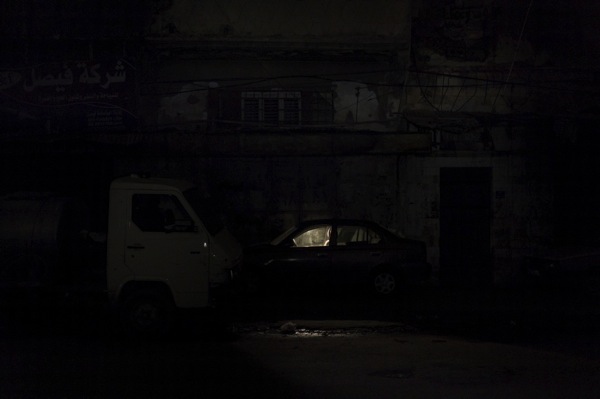
The brilliance of Mr. Panella’s series of photos (yes, tilt your screens around, look hard, try and adjust your eyes) is the way these lovely, yet not-so-discernible photos force us to not just observe, but actually share (if, in an infinitesimal way) in the chronic burden of lack of fuel, the lack of power, and the resulting lack of light. And how thrilling to encounter such a bold visual strategy which not only maintains its eloquence over the series but enables the subject matter — the problem of illumination — to function as a practical challenge for the viewer as much as a metaphor.
As for Ms. Habjouqa’s images…
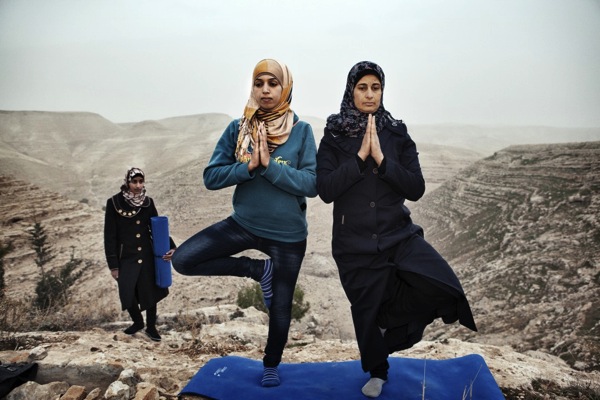
In the real world, Muslims practice yoga, even if the tree pose poses some practical obstacles.

In the real world, Palestinians can employ portraiture in the style of the New York Times Magazine, in front of one’s house demolished by the other “other.”
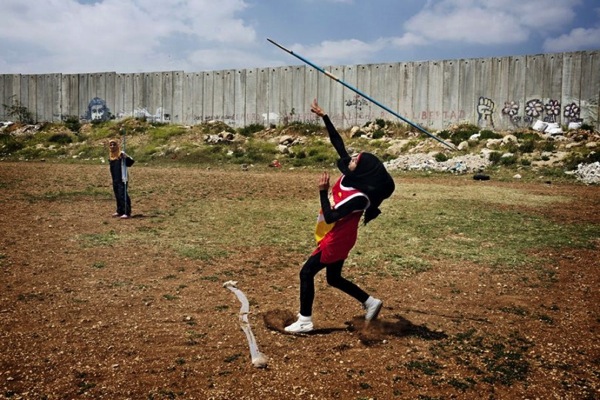
And in the real world, women in the hijab practice javelin. And, the wall is still there.
A week after the 2014 World Press Awards have become history, the world of news photography is still challenged by issues of stereotype, sensationalism and gender bias. But after these choices, and for the Palestinians, perhaps a little less.
See Tanya Habjouqa’s “Occupied Pleasures.”
See Gianluca Panella’s “Gaza Blackout.”
(photos 1 & 2: Gianluca Panella caption: Al Shejaeya, Al Mansura Street, Gaza City. For the people of Gaza, the basic necessities of daily life are endlessly tied to politics. Fuel represents one of the most fundamental examples of this entanglement. Gaza’s fuel supply is dependent upon sales from Egypt, Israel, and the Palestinian Authority of the West Bank. At the end of 2013, a collision of these forces resulted in the overflow of raw sewage, unprecedented flooding from winter storms, and over 21-hour long electrical blackouts. photo 3 – 5: Tanya Habjouqa caption 3: 19 December 2012: Hyatt (left) recently took a yoga lesson from a visiting American yoga instructor. She is now teaching the young residents of Zataara, a small village on the outskirts of Bethlehem in the West Bank. caption 4: caption 4: 31 August 2013: Khalid Zir and his five daughters take a break beside the ruins of their demolished home in the East Jerusalem neighborhood of Silwan. caption 5: 23 April 2013. Students from the Al-Quds University javelin team wrap up the last practice before summer vacation in the West Bank city of Abu Dis, next to the Israeli Separation Wall.)
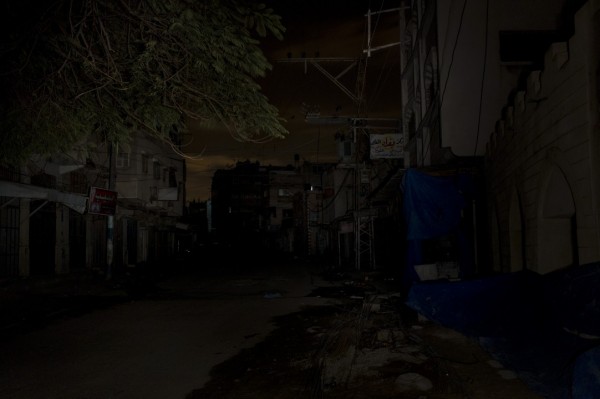
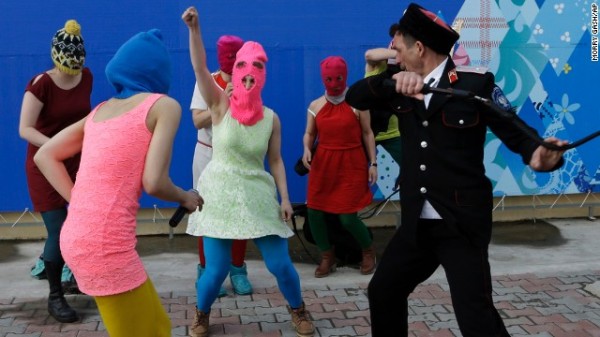
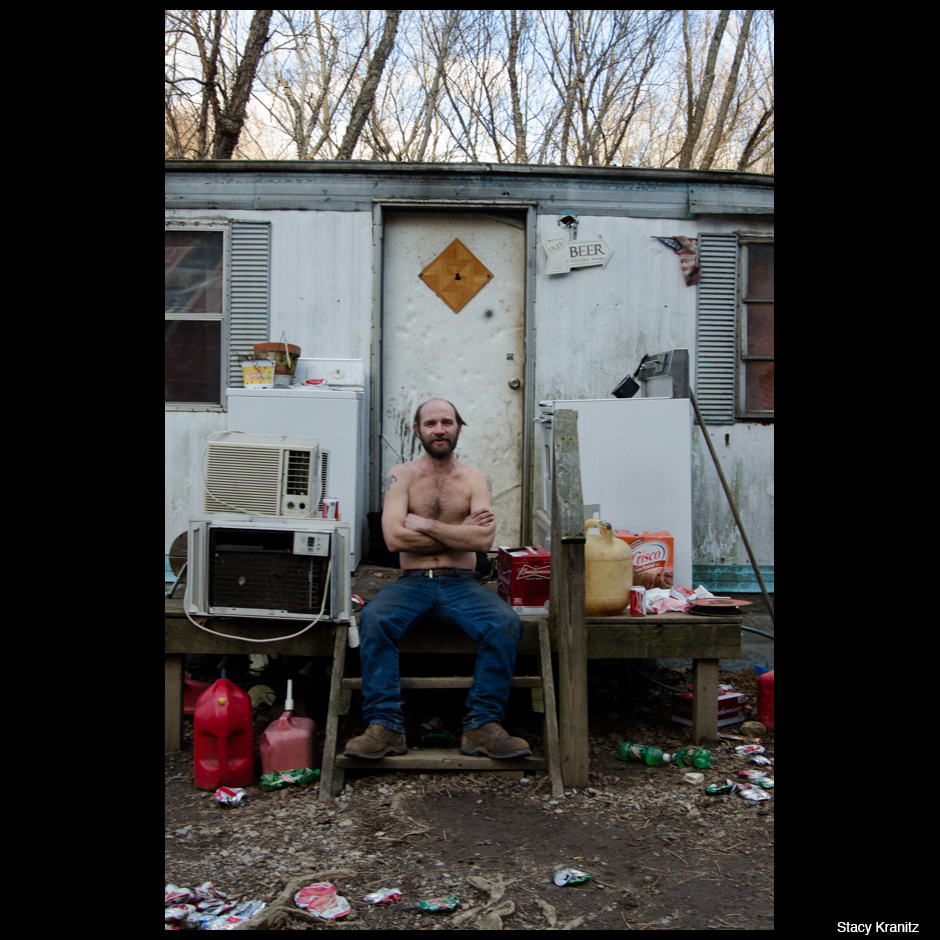
Reactions
Comments Powered by Disqus